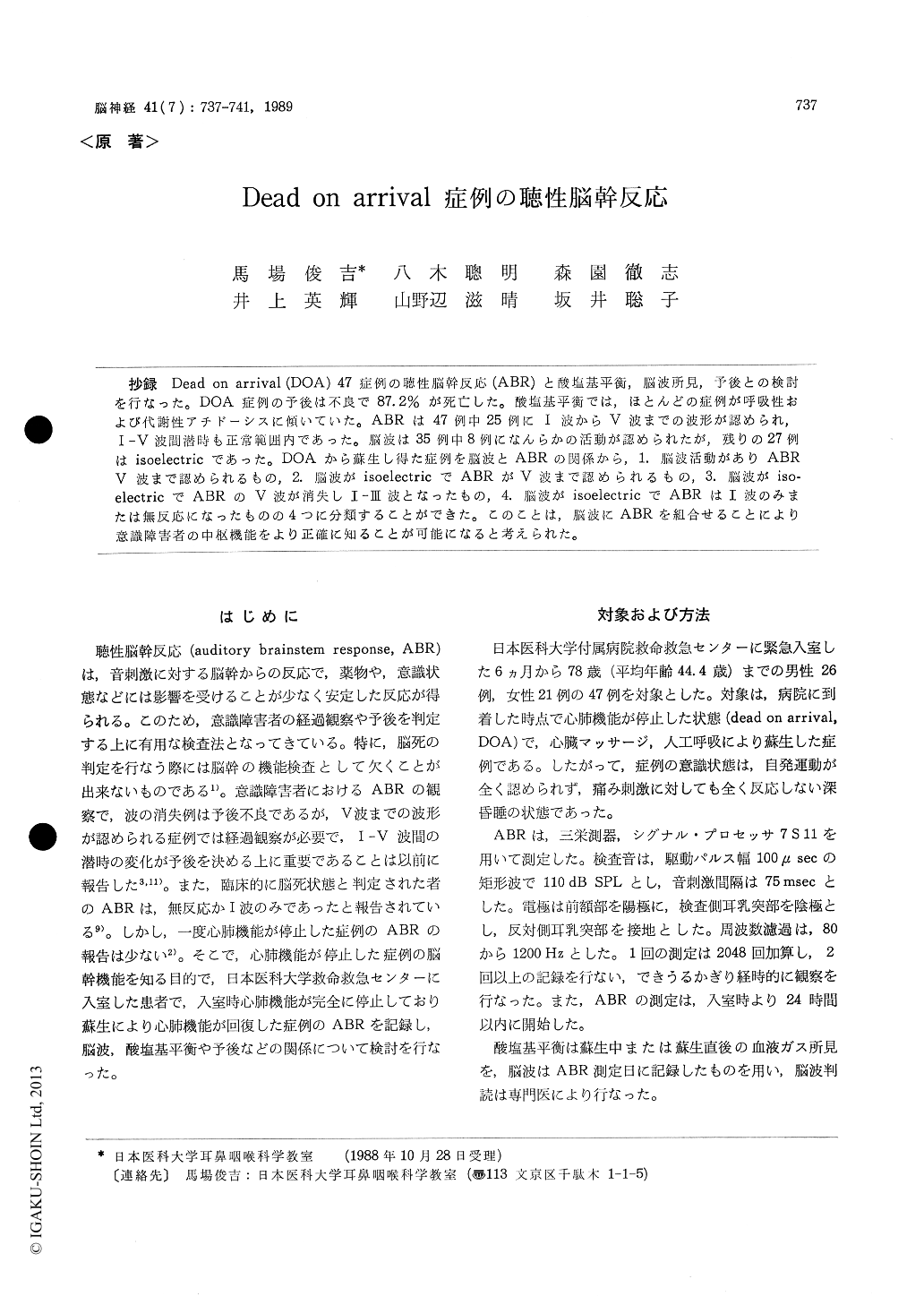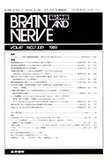Japanese
English
- 有料閲覧
- Abstract 文献概要
- 1ページ目 Look Inside
抄録 Dead on arrival (DOA)47症例の聴性脳幹反応(ABR)と酸塩基平衡,脳波所見,予後との検討を行なった。DOA症例の予後は不良で87.2%が死亡した。酸塩基平衡では,ほとんどの症例が呼吸性および代謝性アチドーシスに傾いていた。ABRは47例中25例にI波からV波までの波形が認められ,I-V波間潜時も正常範囲内であった。脳波は35例中8例になんらかの活動が認められたが,残りの27例はisoelectricであった。DOAから蘇生し得た症例を脳波とABRの関係から,1.脳波活動がありABRV波まで認められるもの,2.脳波がisoelectricでABRがV波まで認められるもの,3.脳波がiso-electricでABRのV波が消失しI-III波となったもの,4.脳波がisoelectricでABRはI波のみまたは無反応になったものの4つに分類することができた。このことは,脳波にABRを組合せることにより意識障害者の中枢機能をより正確に知ることが可能になると考えられた。
The relationship between ABR on the one hand and acid-base balance, EEG findings and prognosis on the other was studied in 47 cases of DOA. As for the acid-base balance, the balance tipped to acidosis in almost all cases.
The ABR showed wave I to wave V in 25 cases, wave I to wave III in 2 cases and only wave I or no response in 20 cases on the admission day. The EEG was isoelectric in 27 out of 35 cases. All the patients who showed some activity in EEG had ABR which showed waves I through V. However, 11 of the 27 patients who were isoelectric EEG showed wave I through V potentials in ABR. By the rela-tionship between EEG and ABR, the cases could be classified into 4 types, namely, 1) there are EEG activities with ABR showing up to wave V and the other types EEG are isoelectric with ABR findings that 2) wave V appears, 3) wave V disappears to leave wave I -X and 4) only I weve or becomes no response.
The acid-base balance of the cases was inclined to accidosis ; therefore, the effect of acidosis on ABR, EEG and disturbance of the brain tissue due to anoxic state weve suspected. Prognosis of DOA cases was poor and 87.2% died. All the patients who exhibited no response in ABR and isoelectric EEG at anytime of their course, died eventually.
These findings suggest that combination of EEG and ABR enables one to learn more exactly the central function in those with disturbance of consciousness.

Copyright © 1989, Igaku-Shoin Ltd. All rights reserved.


